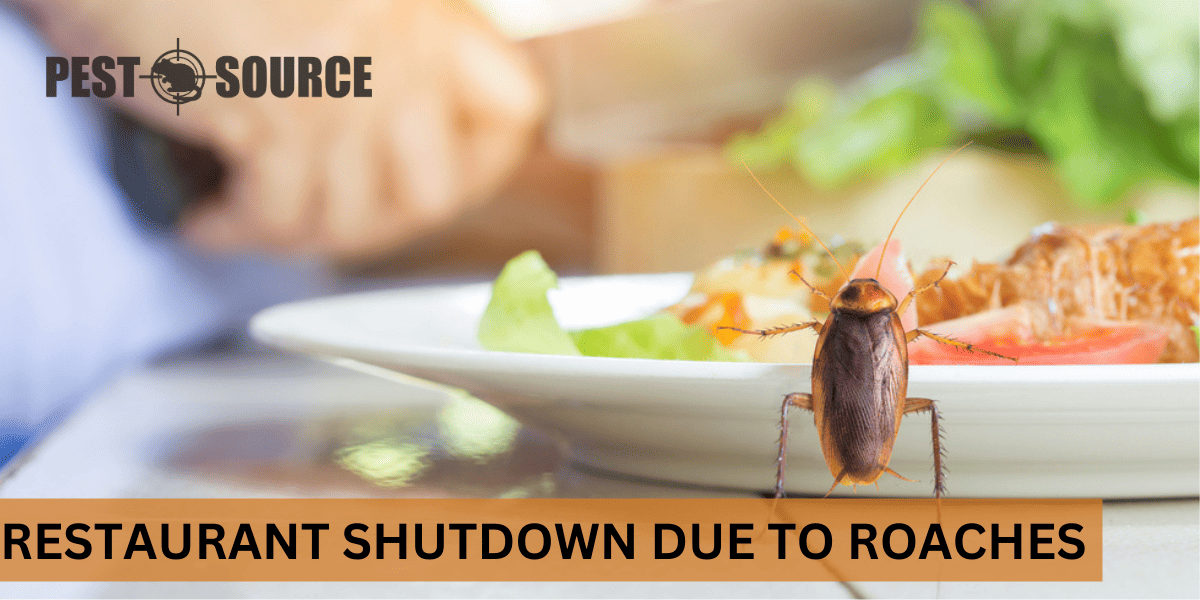Restaurants can be shut down for a cockroach infestation, as it poses significant health risks and violates hygiene standards. This article discusses the regulations and consequences of pest infestations in food establishments.
POINTS
- Cockroach infestations in restaurants can lead to health code violations and potential shutdowns, as they pose serious health risks and can contaminate food with pathogens like E. coli and Salmonella.
- Signs of a cockroach infestation include the presence of live or dead cockroaches, feces that resemble coffee grounds or black pepper, egg cases, shed skins, and a distinctive oily or musty odor.
- Legal questions and customer reactions to cockroach sightings can be severe, ranging from negative reviews to legal action, and employees may seek recourse if the issue is not addressed.
- Professional pest control services are essential for effectively eliminating cockroaches, and regular maintenance and preventative measures are key to keeping them away.
- It’s a myth that all restaurants have cockroaches; many adhere to strict cleanliness standards and regular pest control measures. However, any sightings can significantly damage a restaurant’s reputation, making swift and transparent management responses critical.
Understanding Cockroaches in Restaurants
Cockroaches in restaurants are not just a nuisance; they are a serious health hazard that can lead to significant consequences, including the shutdown of the establishment. Understanding the legal and health code implications of cockroach infestations is crucial for restaurant owners and managers. Health code violations stemming from the presence of roaches can trigger inspections, fines, and in severe cases, closure of the restaurant.
Legal and Health Code Implications
The severity and frequency of cockroach infestations that typically result in the closure of a restaurant can vary by location and the specific health codes in place. However, any sign of cockroaches can be enough to warrant immediate action. Health inspectors look for evidence of pest infestations, and if they find cockroaches—especially in large numbers or across multiple inspections—the restaurant can be deemed unsanitary and unsafe for the public. This can lead to a failing health inspection score, and potentially, a mandatory shutdown until the problem is resolved.
Signs of Cockroach Infestation and Health Risks in Restaurants
Common Signs of Infestation
Restaurant staff and patrons should be vigilant for signs of cockroach infestations. These signs include:
- Live or dead cockroaches, particularly in areas with food, water, and warmth.
- Cockroach feces, which may resemble coffee grounds or black pepper.
- Egg cases (oothecae) or shed skins in hidden areas such as under sinks, behind appliances, or inside pantries.
- An oily or musty odor, which is a pheromone secreted by cockroaches.
Health Risks Posed by Cockroaches
Cockroaches are known carriers of various pathogens and can contaminate food and surfaces, posing serious health risks. They can spread bacteria such as E. coli and Salmonella, and their presence can lead to the spread of diseases like giardia. If a cockroach were to crawl on your food, it could potentially transmit these pathogens, leading to foodborne illnesses.
Electrical Problems and Hygiene Impact
Beyond health risks, cockroaches can cause electrical problems by chewing through wiring, which can lead to costly repairs and fire hazards. Their presence also significantly impacts restaurant hygiene, as they can infiltrate food storage areas and compromise the cleanliness of kitchen equipment and dining areas.
Legal Recourse, Customer Reactions, and Cockroach Control in Restaurants
Legal Questions and Customer Reactions
When cockroaches are discovered in a restaurant, it can prompt legal questions such as, “Can I sue my job for having roaches?” Employees working in infested conditions may have grounds for complaints or legal action if the problem is not addressed. Similarly, customer reactions to finding roaches in their food can range from negative reviews to legal claims for compensation due to the potential health implications.
Role of Pest Control Services
To effectively get rid of cockroaches, restaurants must turn to professional pest control services. These experts can provide:
- Thorough inspections to identify the extent of the infestation.
- Treatment plans that include both extermination and preventative measures.
- Recommendations for maintaining a roach-free environment, such as sealing entry points and proper sanitation practices.
Challenges and Solutions for Specific Areas
Dealing with roaches in restaurants, especially in hard-to-reach areas like electrical outlets, requires a strategic approach. Pest control professionals often use baits, traps, and insect growth regulators to manage infestations in these challenging spots. Regular monitoring and maintenance are key to preventing re-infestation.
Debunking Myths and Managing Restaurant Reputation
When it comes to cockroaches and restaurants, there are several myths that can distort the public’s perception of the issue. It’s important to address these misconceptions and provide accurate information to ensure that the public understands the reality of pest control in food establishments.
Addressing Common Myths
Do All Restaurants Have Roaches?
One prevalent myth is that all restaurants have cockroaches. This is simply not true. While it’s challenging to maintain a completely pest-free environment, many restaurants adhere to strict cleanliness standards and have regular pest control measures in place to prevent infestations. It’s important to recognize that the presence of cockroaches is not an inevitability but rather a sign that pest control practices may need to be improved.
Impact of Roach Sightings on Restaurant Reputation
The sight of even a single cockroach can have a detrimental impact on a restaurant’s reputation. Customers are likely to associate roaches with uncleanliness and may share their experiences through word-of-mouth or online reviews, which can discourage potential patrons and affect the business’s bottom line.
Customer Reviews
Online reviews are powerful, and negative reviews mentioning cockroaches can spread quickly. It’s crucial for restaurants to monitor their online presence and address any concerns promptly and professionally. Responding to reviews and demonstrating a commitment to resolving issues can help mitigate the damage to the restaurant’s reputation.
Management Strategies Following Incidents
In the event of a cockroach sighting, restaurant management should take immediate action to:
- Assess and address the situation by contacting pest control services to eliminate the infestation.
- Communicate openly with customers and staff about the steps being taken to resolve the issue.
- Follow up with customers who were directly affected, offering apologies and, where appropriate, compensation.
- Review and enhance pest control and hygiene practices to prevent future occurrences.



